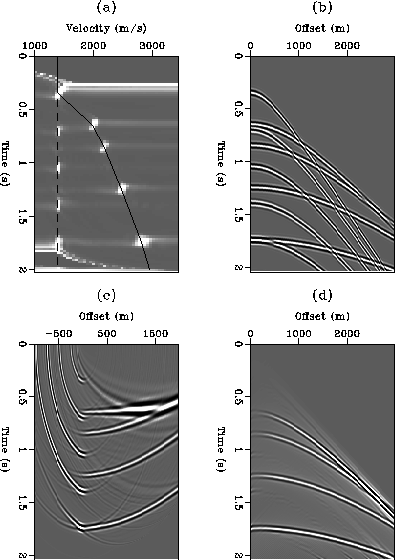My synthetic CMP gather is generated from a velocity model that consists
of six layers. Figure 3a displays the stacking velocity function
of the model on the background of the velocity spectrum of the data.
Figure 3b shows the synthetic CMP gather.
Several strong water-bottom multiples can be identified.
The result of forward transformation is shown in Figure 3c. Clearly
the water-bottom reflection and its multiples
are migrated entirely to the negative offsets and are
well separated from other events.
Now we set the traces at negative offsets to zero and then do backward
transformation. The result is shown in Figure 3d. The water-bottom
reflection and its multiples are eliminated. At far offsets, some events with
linear moveout are truncation artifacts.
For simplicity, constant weighting functions are used in the transformations.
Therefore, operator ![]() is the transpose, not the inverse, of
operator
is the transpose, not the inverse, of
operator ![]() . We see that the amplitudes of the events are not
preserved after backward transformation.
. We see that the amplitudes of the events are not
preserved after backward transformation.
 |